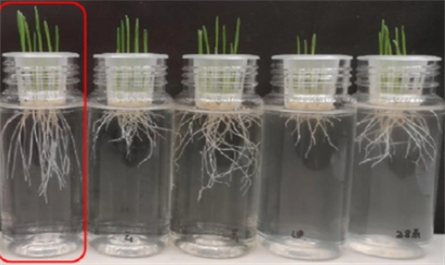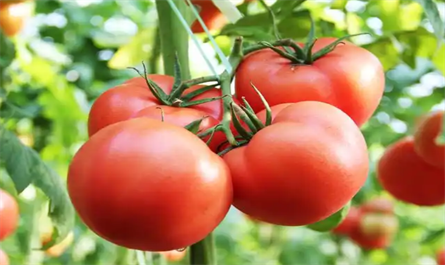Compounding technology of plant growth regulators
Combination of rooting agents
Rooting agents are mainly used to promote rooting and seedling retardation after transplanting seedlings, as well as cuttings of seedlings. Common compounding types of rooting agents include the combination of auxin with soil fungus, catechol, etc., which aims to improve the rooting rate and survival rate of transplanted seedlings.

Fruit setting agents:
These preparations mainly increase the parthenocarpy rate, thereby increasing the single weight of fruits and promoting fruit setting. They can also accelerate the expansion rate of fruits, thereby increasing the size of fruits. Common fruit setting agents include the combination of Gibberellic Acid and cytokines, the mixture of Gibberellic Acid with auxin and 6-BA, and the compounding of various other Gibberellic Acid and other active ingredients.
Inhibitory fruit setting agents and grain yield increasers:
The main function of this type of preparation is to control excessive growth and thus increase the fruit setting rate. They often contain ingredients such as Chlormequat Chloride and Choline chloride, Chlormequat Chloride and Ethephon, which optimize fruit setting by inhibiting plant growth.
Dormancy-breaking growth promoters:
These preparations mainly break the dormancy of plants and promote germination. They may contain ingredients such as Gibberellic Acid and thiourea, potassium nitrate and thiourea, which break dormancy by activating the growth mechanism of plants.

Drying defoliants:
These preparations are mainly used for crops such as sesame and cotton to dry and defoliate before mechanical harvesting. They not only need to have good drying and defoliation effects, but also increase yields. Common drying defoliants include mixtures of Ethephon and paraquat, thiazolin and methyl parathion.
Ripening coloring and quality improvement agents:
These preparations can accelerate fruit ripening, make the color brighter, and increase the sweetness of the fruit. Common types include mixtures of Ethephon and cyclodextrin, Ethephon and cyclodextrin complexes, etc., which achieve the effect of improving quality by affecting the balance of plant hormones.
Fruit and vegetable, fruit picking agent:
When used before fruits such as apples and citrus are about to mature, it can promote the formation of abscission layer at the base of the fruit stalk, so as to smoothly achieve the fruit picking. There are various types of such preparations, such as the combination of naphthylacetamide and ethephon, the mixture of dinitro-o-cresol, naphthylacetamide and ethephon, etc., which achieve the purpose of fruit picking through different mechanisms of action.

Promoting flower bud development, flowering and sex ratio:
These preparations can promote the transition of fruit crops from vegetative growth to reproductive growth, thereby stimulating flowering. Common types include mixtures of Naphthyl Acetic Acid and 6-Benzylaminopurine (6-BA), etc., which promote the development and flowering of flower buds by regulating the balance of plant hormones.
Bud inhibitor:
Mainly used in crops such as tobacco and potatoes, it can inhibit the germination and sprouting of axillary buds. The types of such preparations include a mixture of cyanogen and sprout inhibitor, a combination of chlorpropamine and benzylamine, etc., which achieve the effect of inhibiting germination through different mechanisms of action.
Growth and yield-increasing agents:
This type of preparation can improve the plant's ability to absorb nutrients such as N, P, and K, thereby increasing yield. Common types include the combination of indoleacetic acid and naphthaleneacetic acid, the combination of growth hormones with cytokines and auxins, etc. They promote growth and increase yield by activating the growth mechanism of plants.
Stress-resistant agents:
This type of preparation can increase the absorption of nutrients, promote the growth of seedlings, and improve cold resistance, drought resistance, disease resistance, and insect resistance. Common types include the combination of anti-kinetics with abscisic acid, the combination of cytokines with auxins and Gibberellic Acid, etc. They enhance the plant's stress resistance by regulating the plant's growth mechanism.
Rooting agents are mainly used to promote rooting and seedling retardation after transplanting seedlings, as well as cuttings of seedlings. Common compounding types of rooting agents include the combination of auxin with soil fungus, catechol, etc., which aims to improve the rooting rate and survival rate of transplanted seedlings.

Fruit setting agents:
These preparations mainly increase the parthenocarpy rate, thereby increasing the single weight of fruits and promoting fruit setting. They can also accelerate the expansion rate of fruits, thereby increasing the size of fruits. Common fruit setting agents include the combination of Gibberellic Acid and cytokines, the mixture of Gibberellic Acid with auxin and 6-BA, and the compounding of various other Gibberellic Acid and other active ingredients.
Inhibitory fruit setting agents and grain yield increasers:
The main function of this type of preparation is to control excessive growth and thus increase the fruit setting rate. They often contain ingredients such as Chlormequat Chloride and Choline chloride, Chlormequat Chloride and Ethephon, which optimize fruit setting by inhibiting plant growth.
Dormancy-breaking growth promoters:
These preparations mainly break the dormancy of plants and promote germination. They may contain ingredients such as Gibberellic Acid and thiourea, potassium nitrate and thiourea, which break dormancy by activating the growth mechanism of plants.

Drying defoliants:
These preparations are mainly used for crops such as sesame and cotton to dry and defoliate before mechanical harvesting. They not only need to have good drying and defoliation effects, but also increase yields. Common drying defoliants include mixtures of Ethephon and paraquat, thiazolin and methyl parathion.
Ripening coloring and quality improvement agents:
These preparations can accelerate fruit ripening, make the color brighter, and increase the sweetness of the fruit. Common types include mixtures of Ethephon and cyclodextrin, Ethephon and cyclodextrin complexes, etc., which achieve the effect of improving quality by affecting the balance of plant hormones.
Fruit and vegetable, fruit picking agent:
When used before fruits such as apples and citrus are about to mature, it can promote the formation of abscission layer at the base of the fruit stalk, so as to smoothly achieve the fruit picking. There are various types of such preparations, such as the combination of naphthylacetamide and ethephon, the mixture of dinitro-o-cresol, naphthylacetamide and ethephon, etc., which achieve the purpose of fruit picking through different mechanisms of action.

Promoting flower bud development, flowering and sex ratio:
These preparations can promote the transition of fruit crops from vegetative growth to reproductive growth, thereby stimulating flowering. Common types include mixtures of Naphthyl Acetic Acid and 6-Benzylaminopurine (6-BA), etc., which promote the development and flowering of flower buds by regulating the balance of plant hormones.
Bud inhibitor:
Mainly used in crops such as tobacco and potatoes, it can inhibit the germination and sprouting of axillary buds. The types of such preparations include a mixture of cyanogen and sprout inhibitor, a combination of chlorpropamine and benzylamine, etc., which achieve the effect of inhibiting germination through different mechanisms of action.
Growth and yield-increasing agents:
This type of preparation can improve the plant's ability to absorb nutrients such as N, P, and K, thereby increasing yield. Common types include the combination of indoleacetic acid and naphthaleneacetic acid, the combination of growth hormones with cytokines and auxins, etc. They promote growth and increase yield by activating the growth mechanism of plants.
Stress-resistant agents:
This type of preparation can increase the absorption of nutrients, promote the growth of seedlings, and improve cold resistance, drought resistance, disease resistance, and insect resistance. Common types include the combination of anti-kinetics with abscisic acid, the combination of cytokines with auxins and Gibberellic Acid, etc. They enhance the plant's stress resistance by regulating the plant's growth mechanism.
RECENT POSTS
-
Choline chloride can increase the yield of root and tuber crops by more than 30%.
-
Effects and Application Methods of 2% Benzylaminopurine + 0.1% Triacontanol Compound in Rice
-
How to Enhance Fertilizer Efficiency Using Plant Growth Regulators?
-
6-Benzylaminopurine 6-BA has a significant preservative effect on fruits and vegetables after harvest
Featured News



